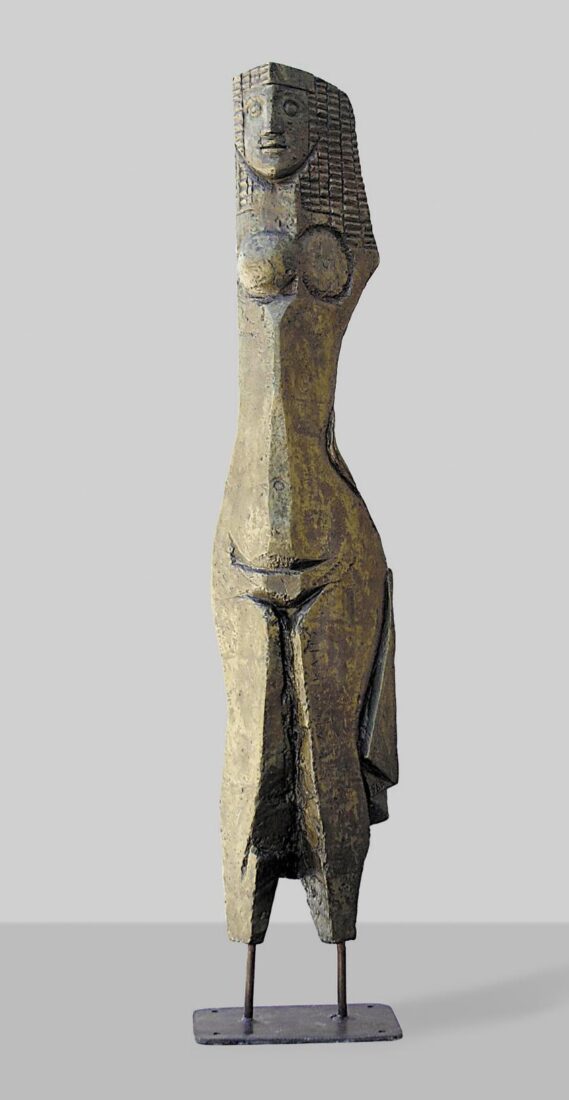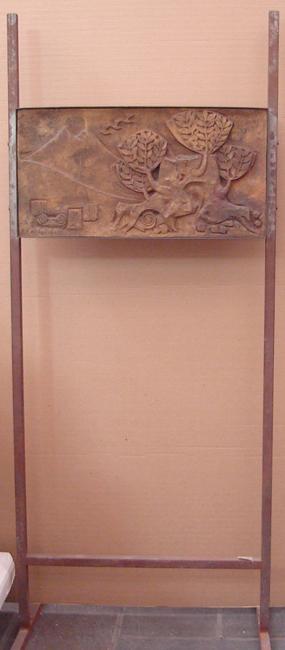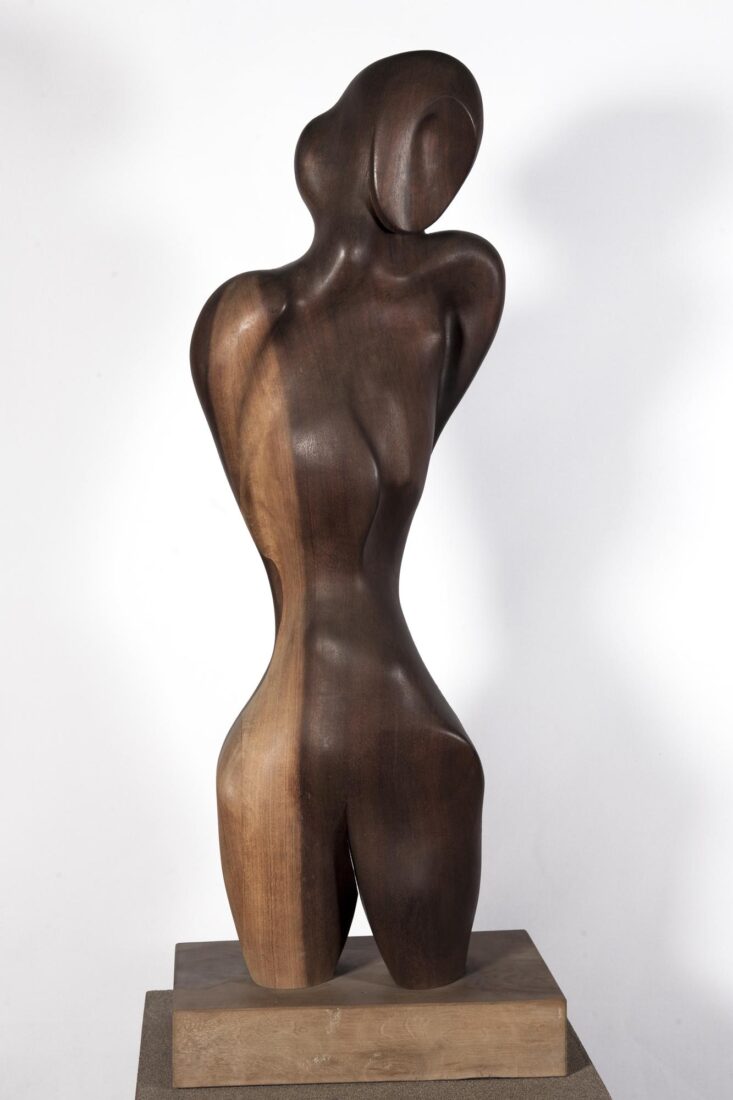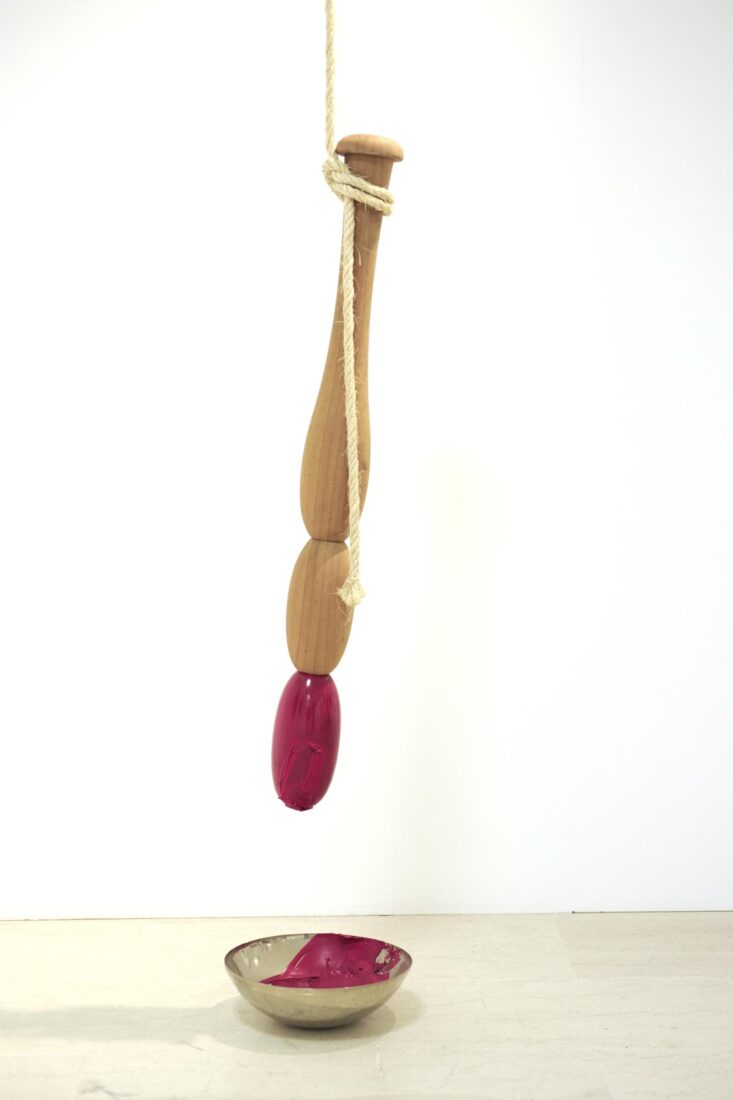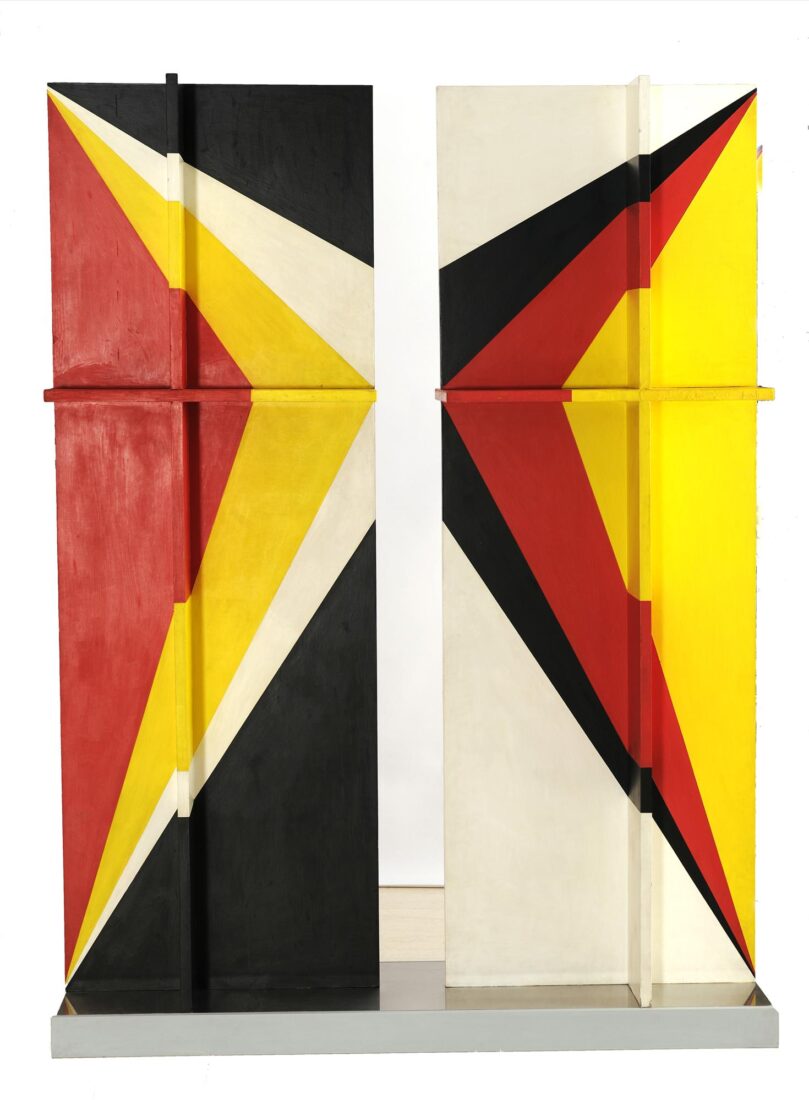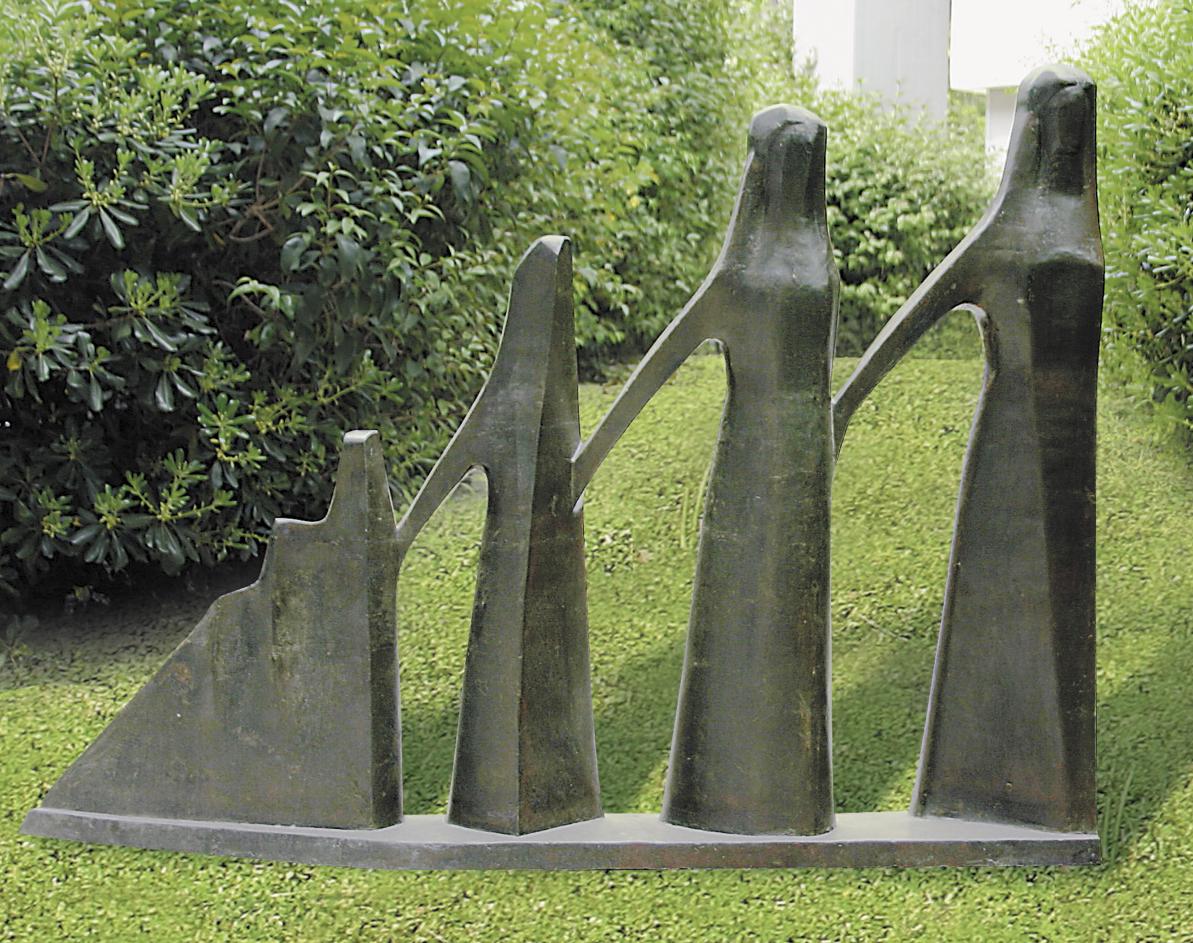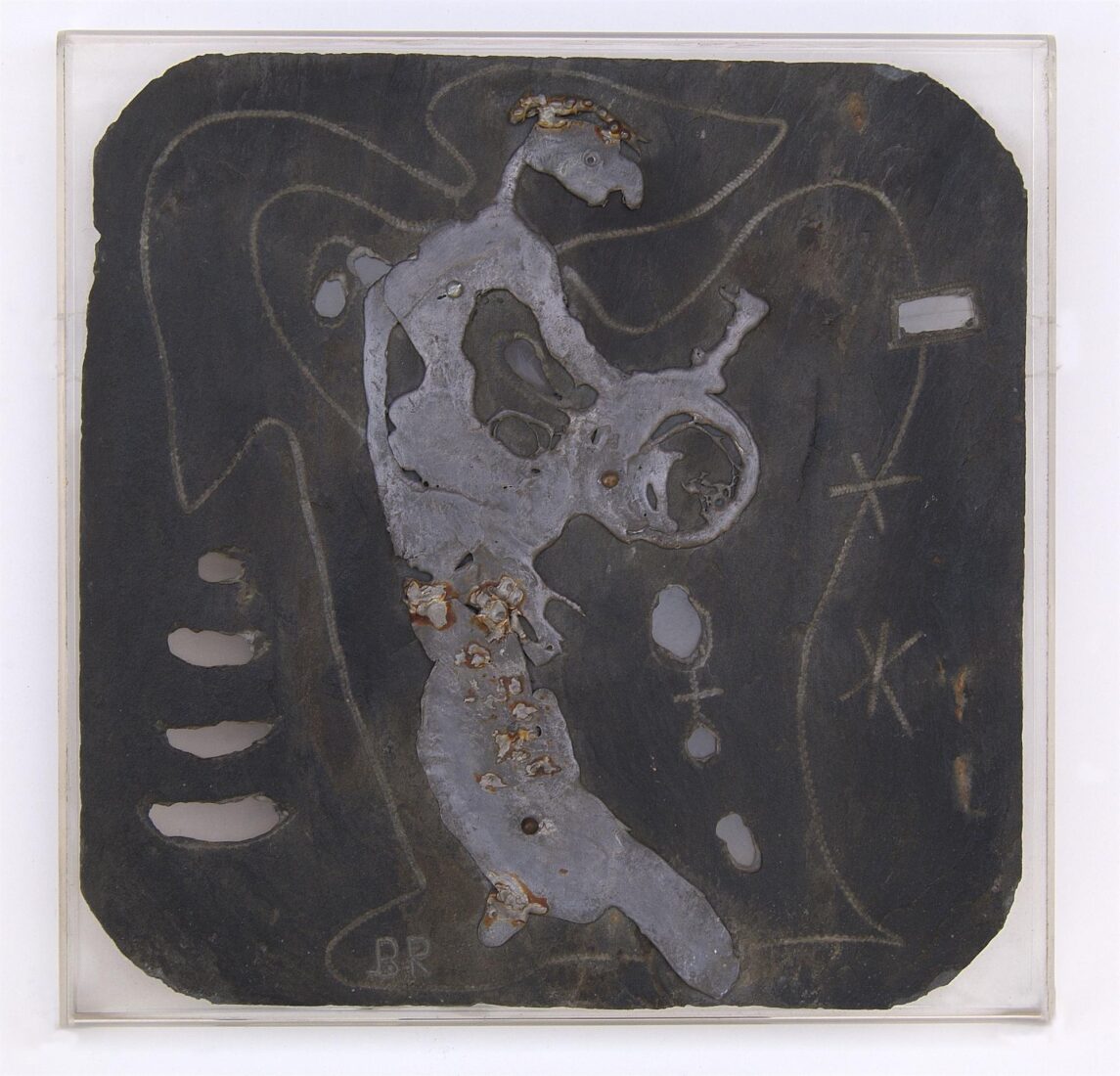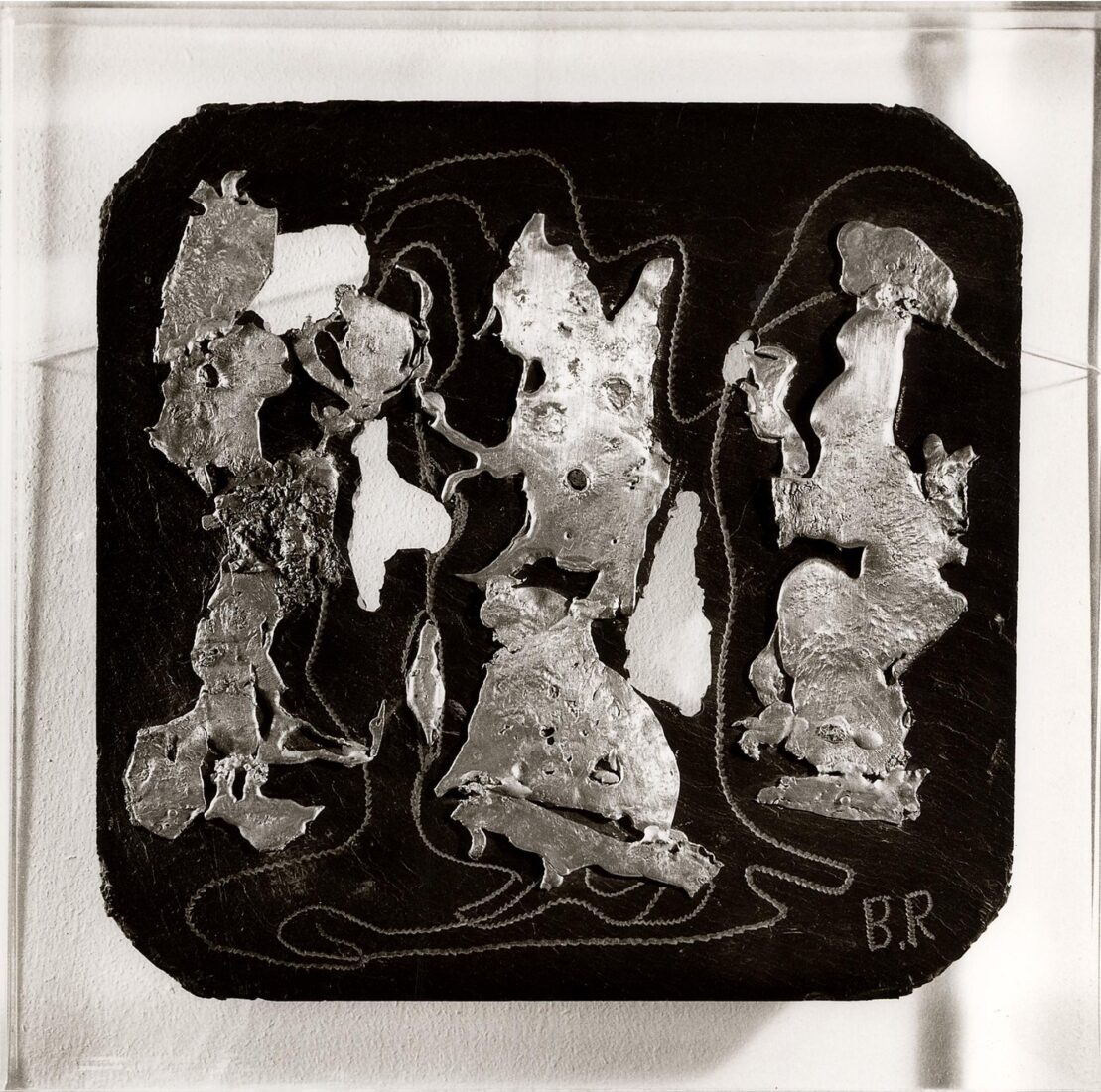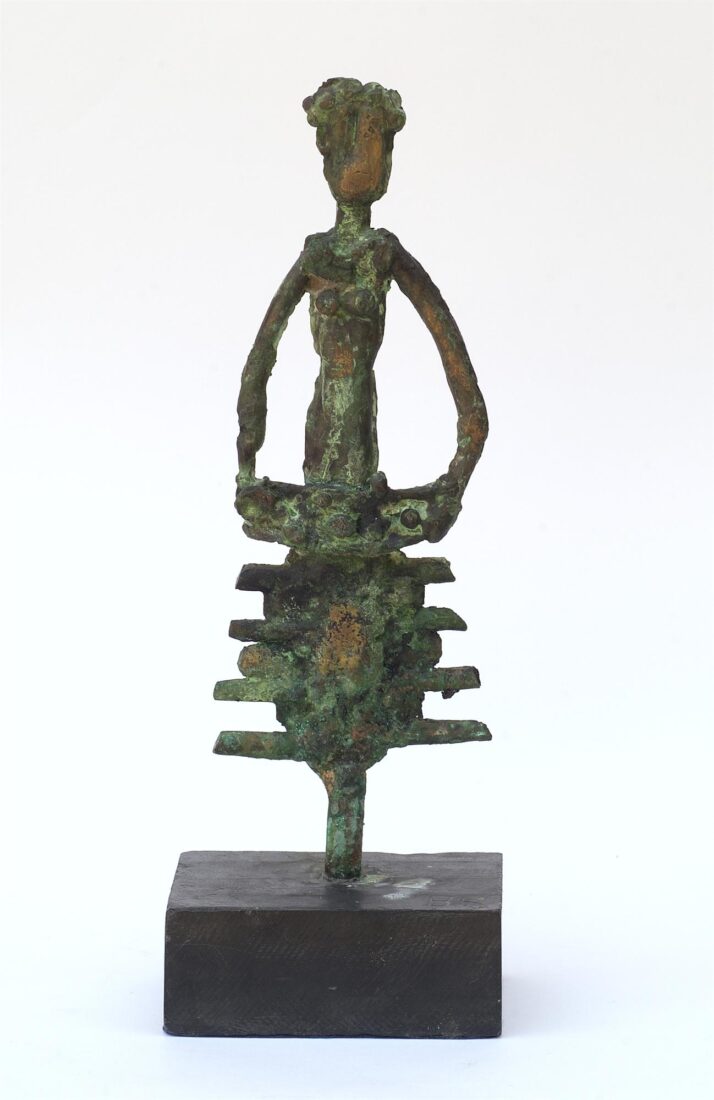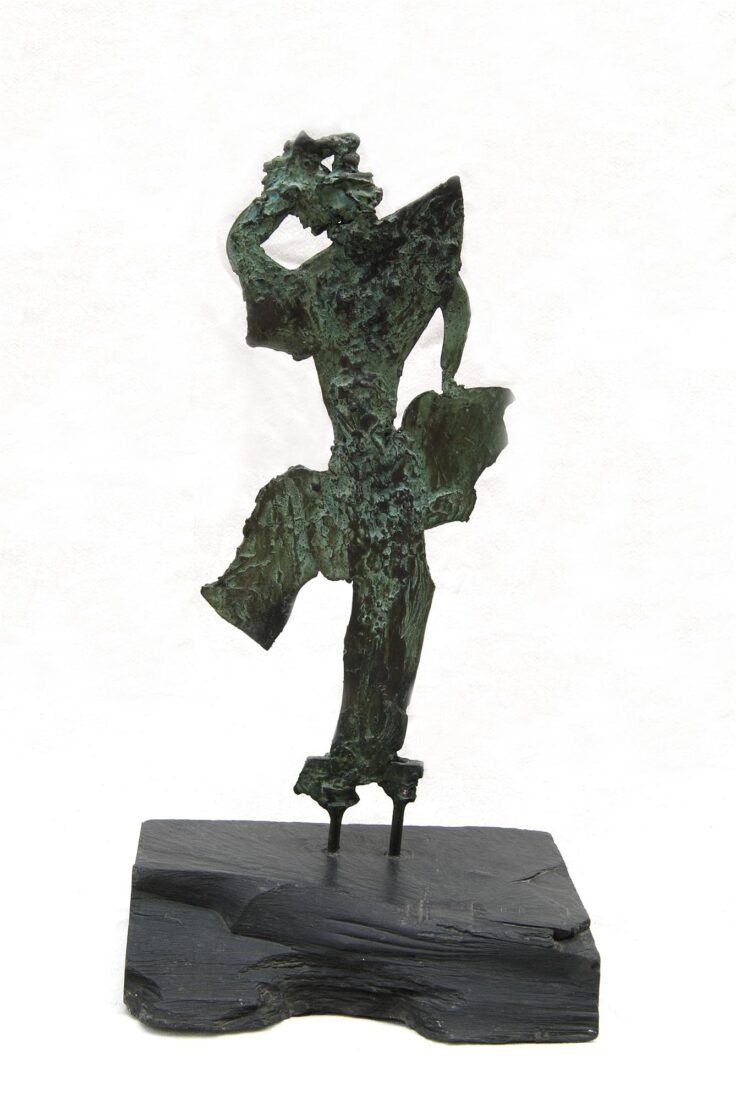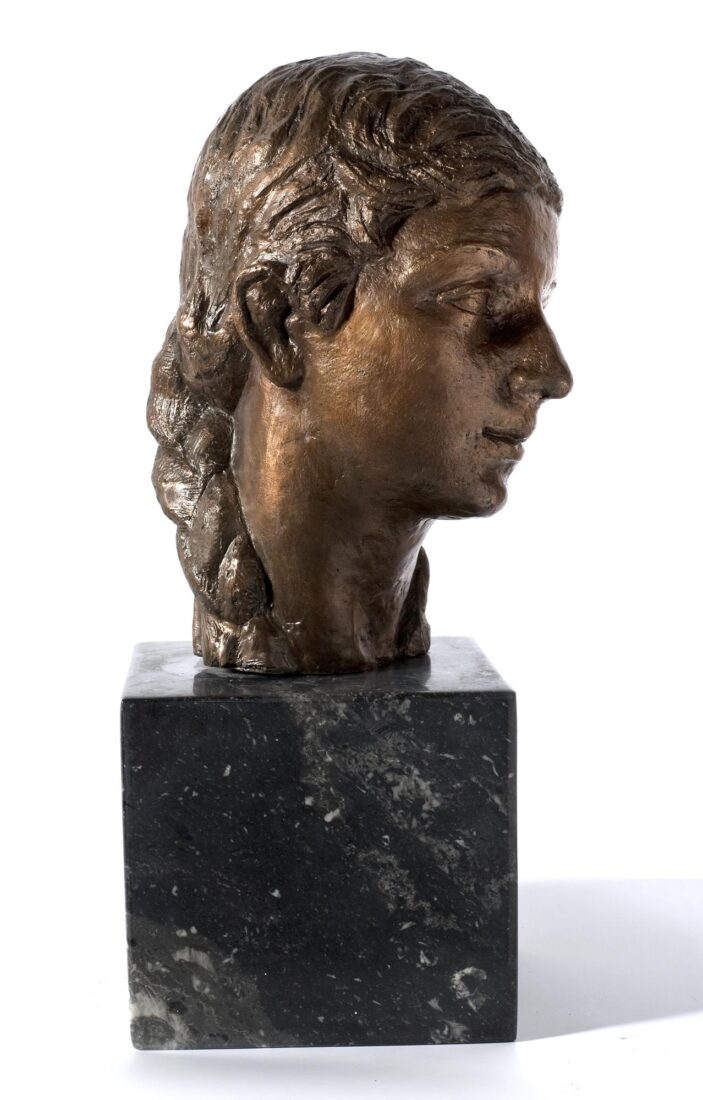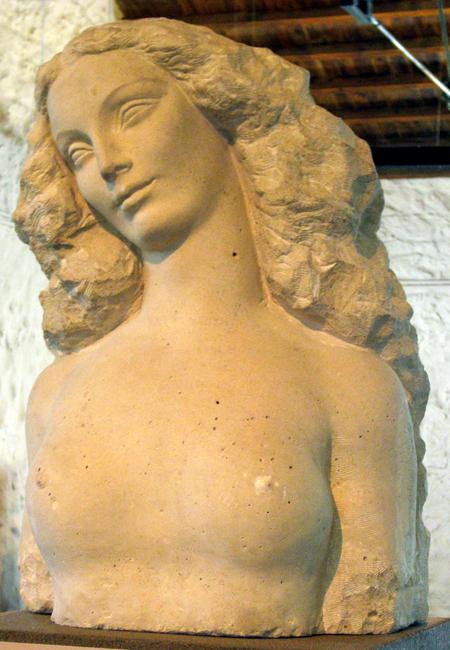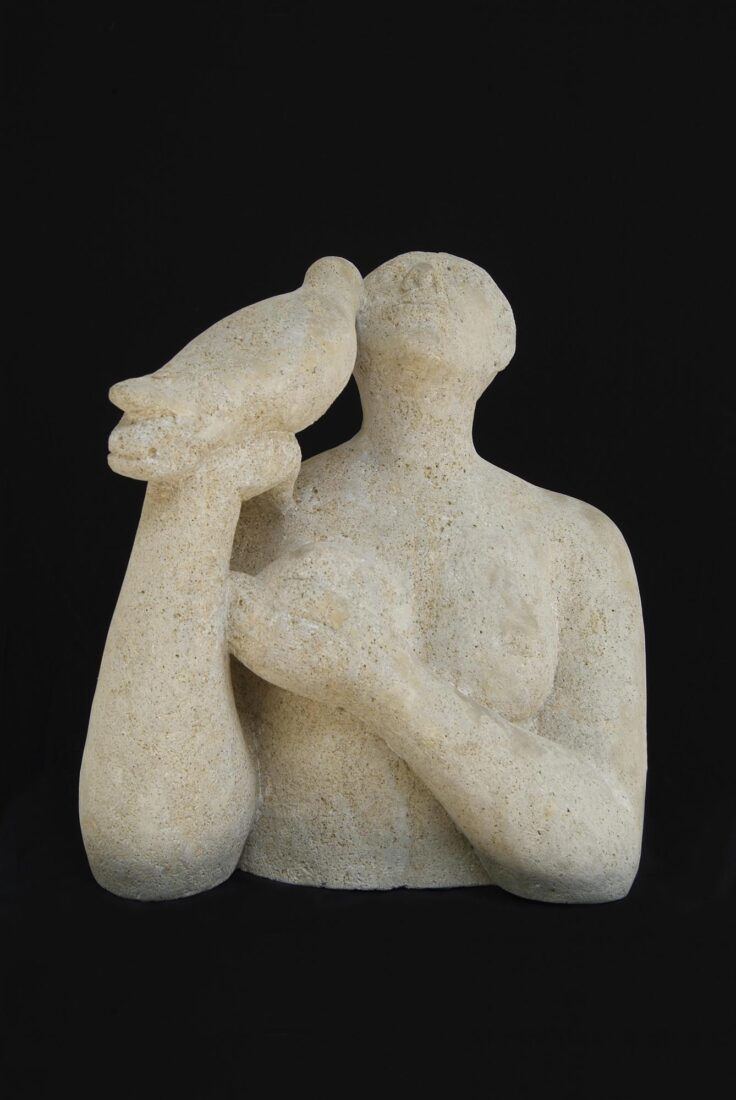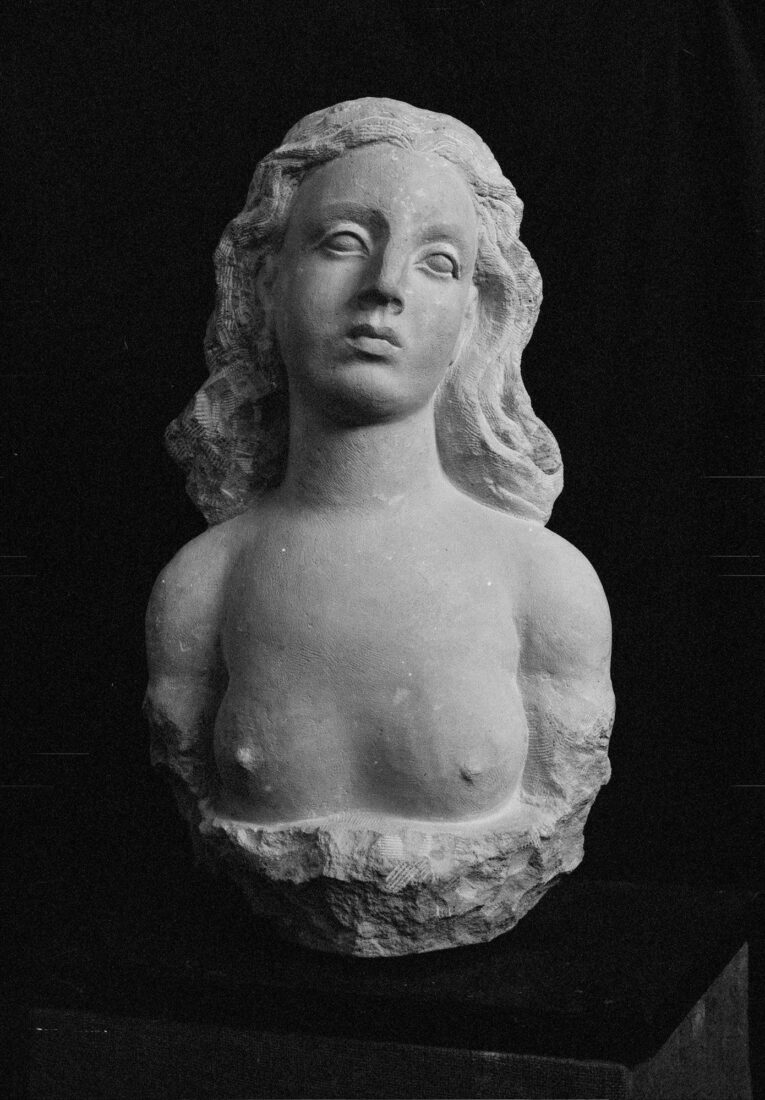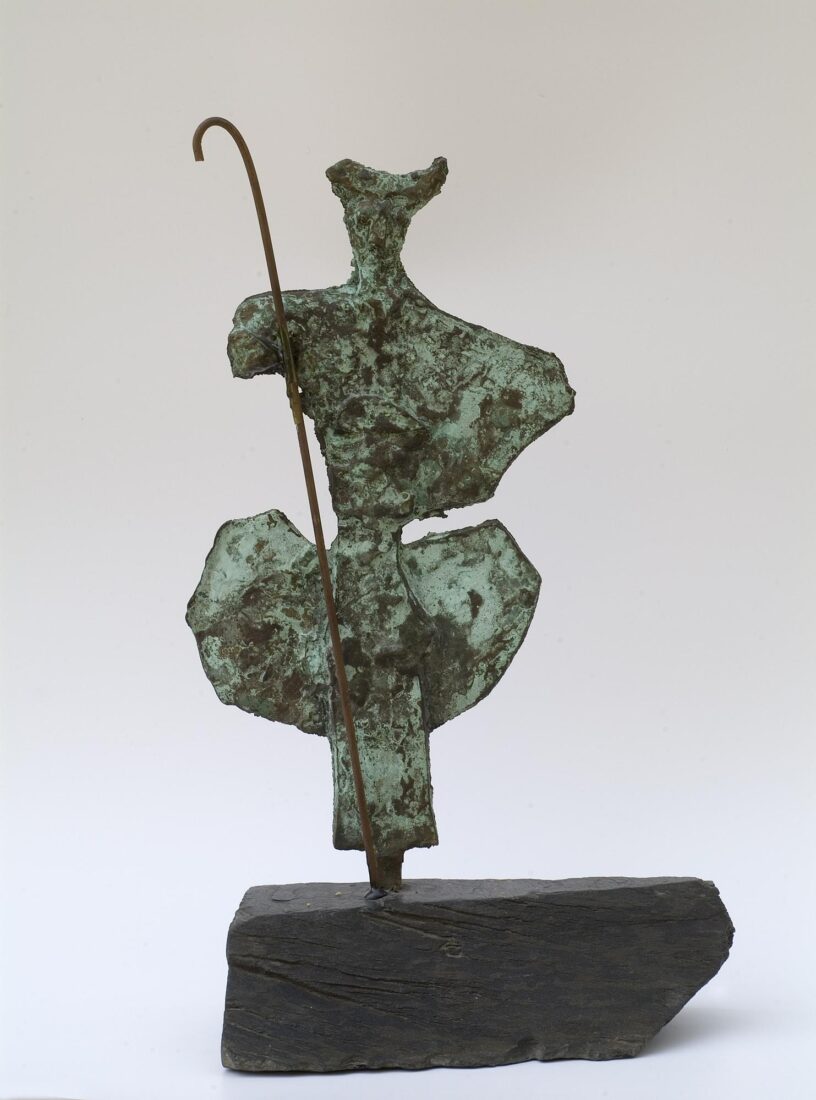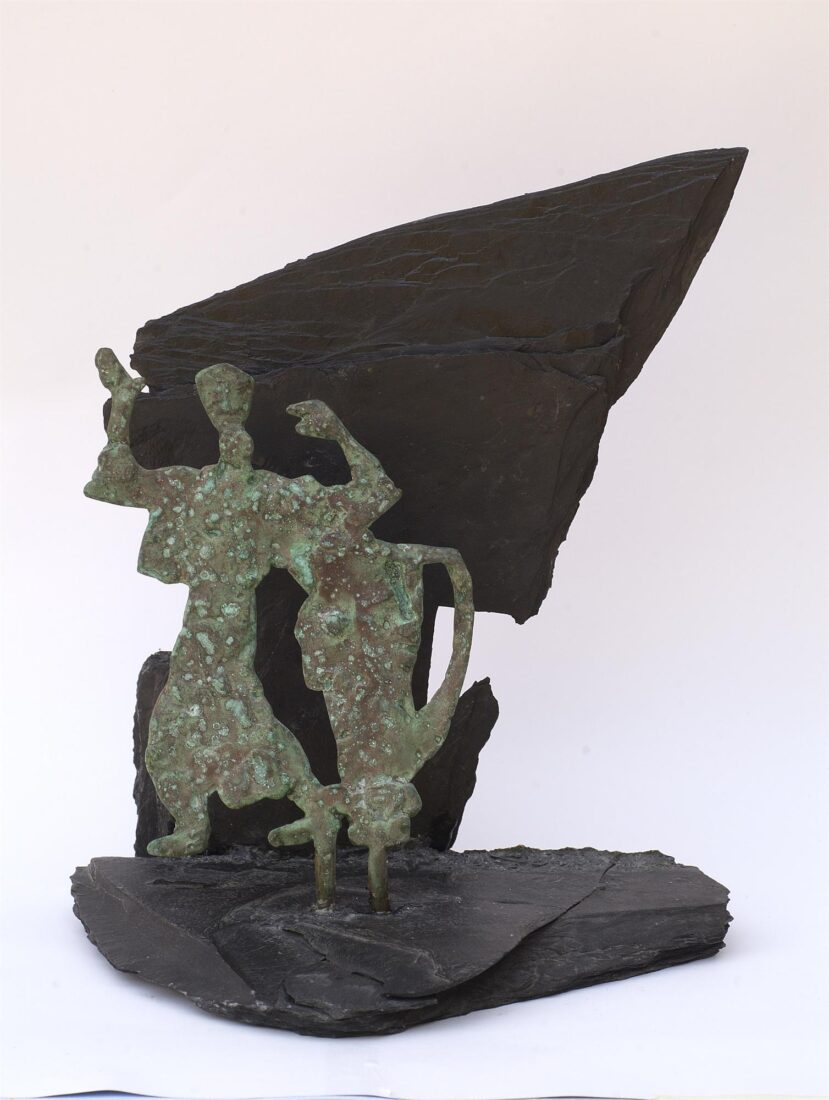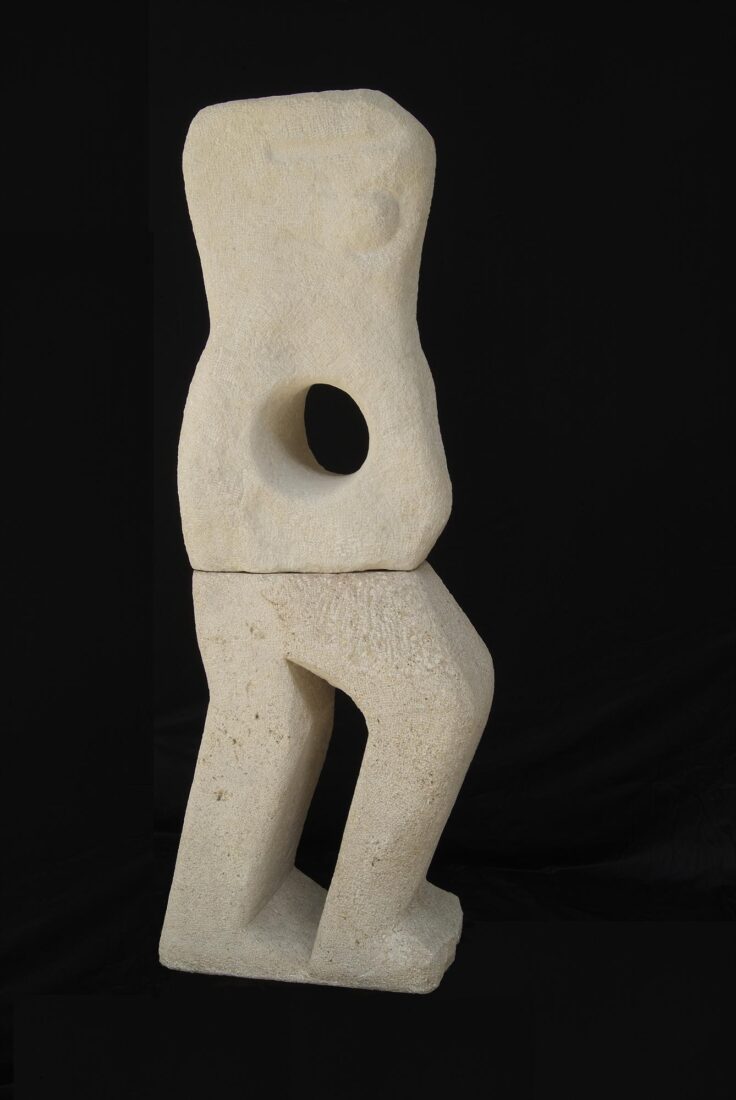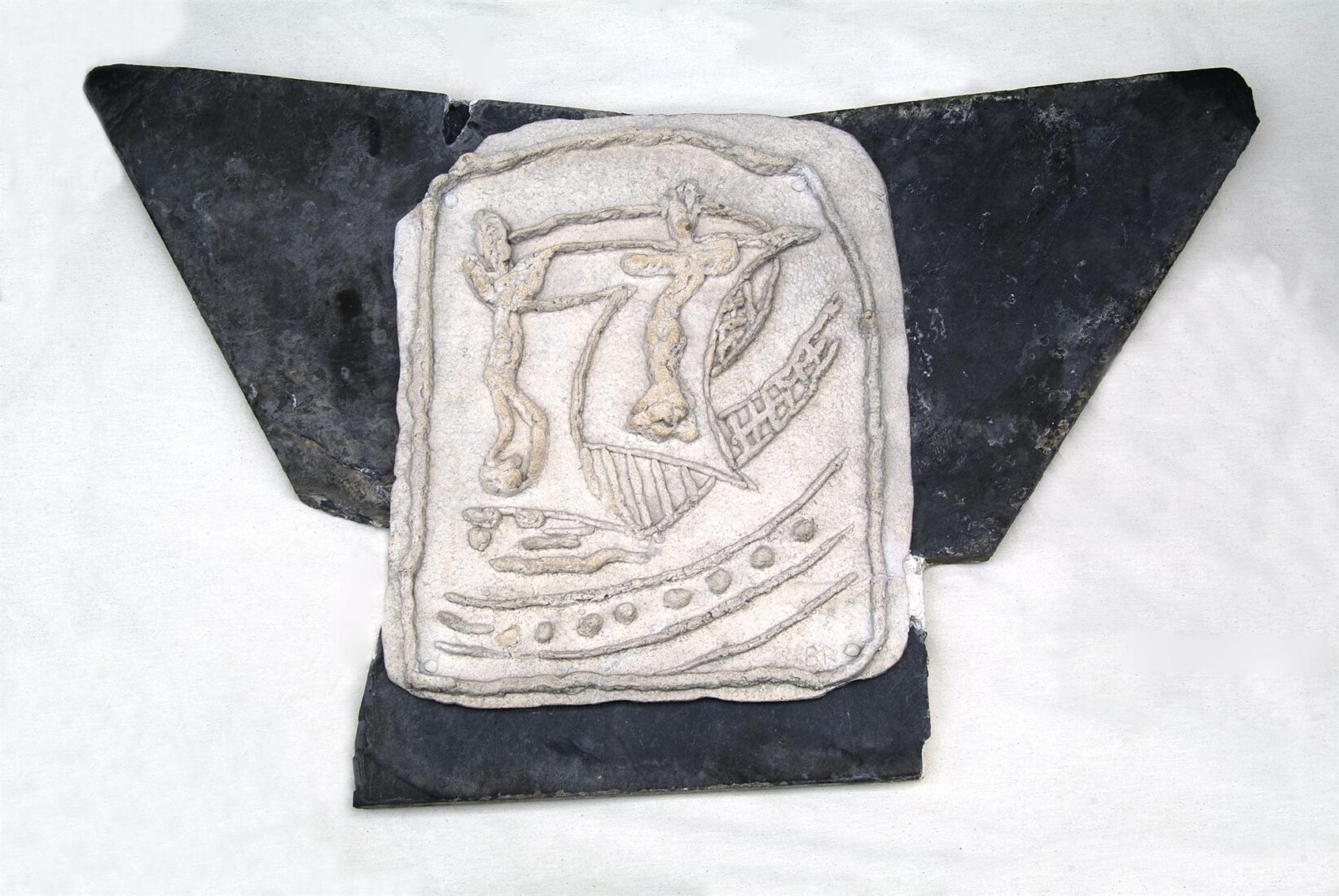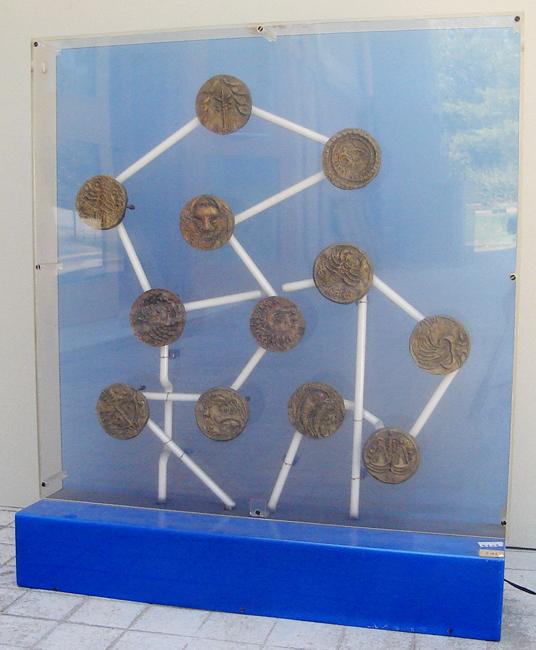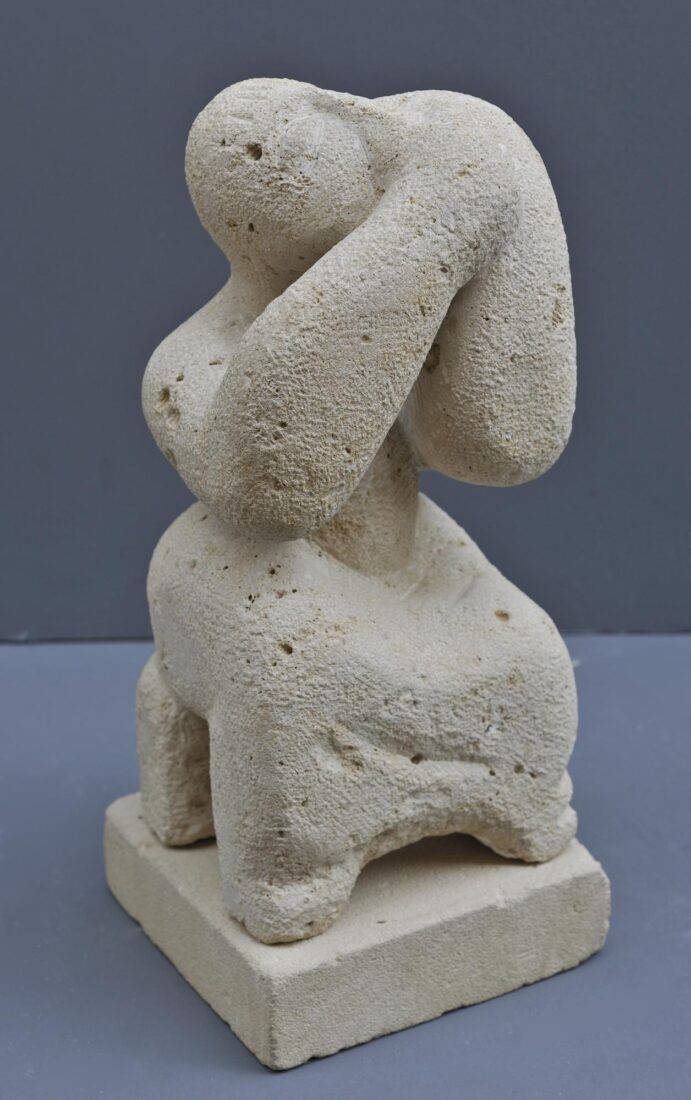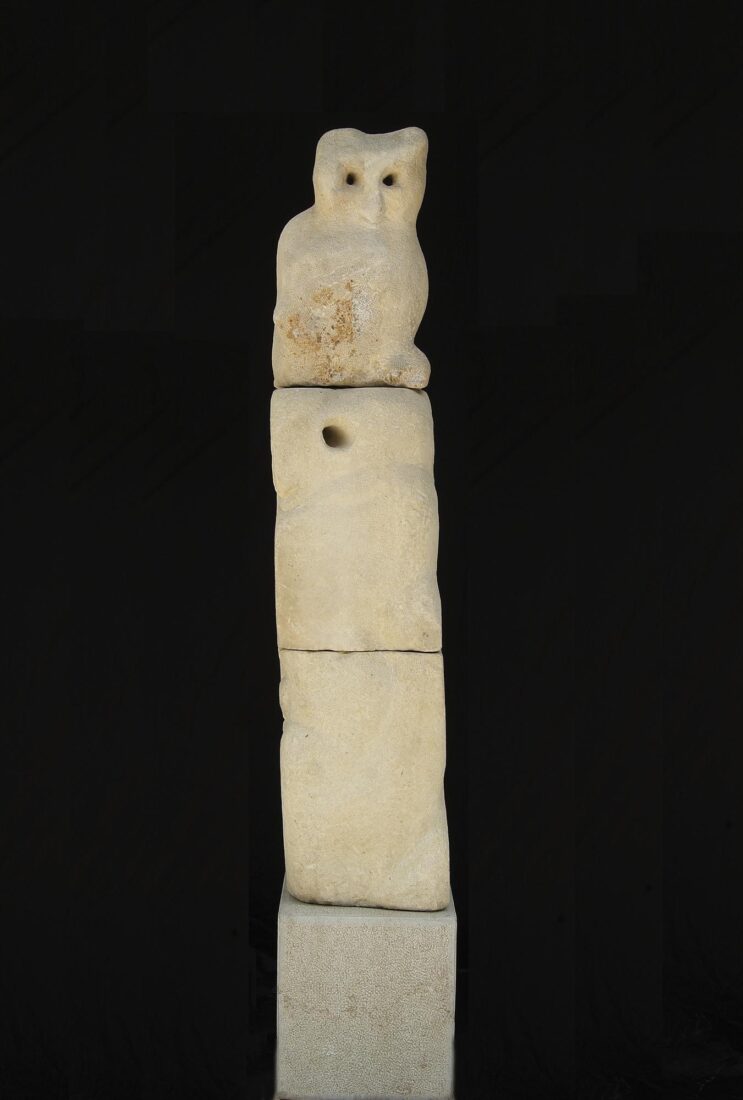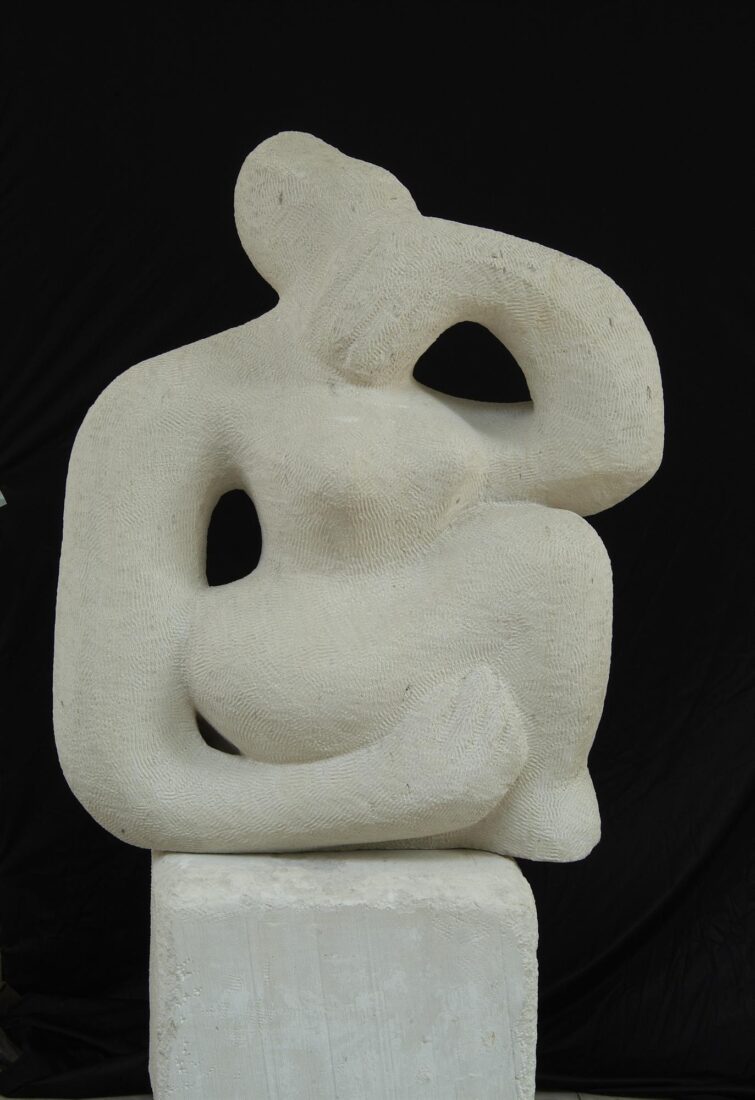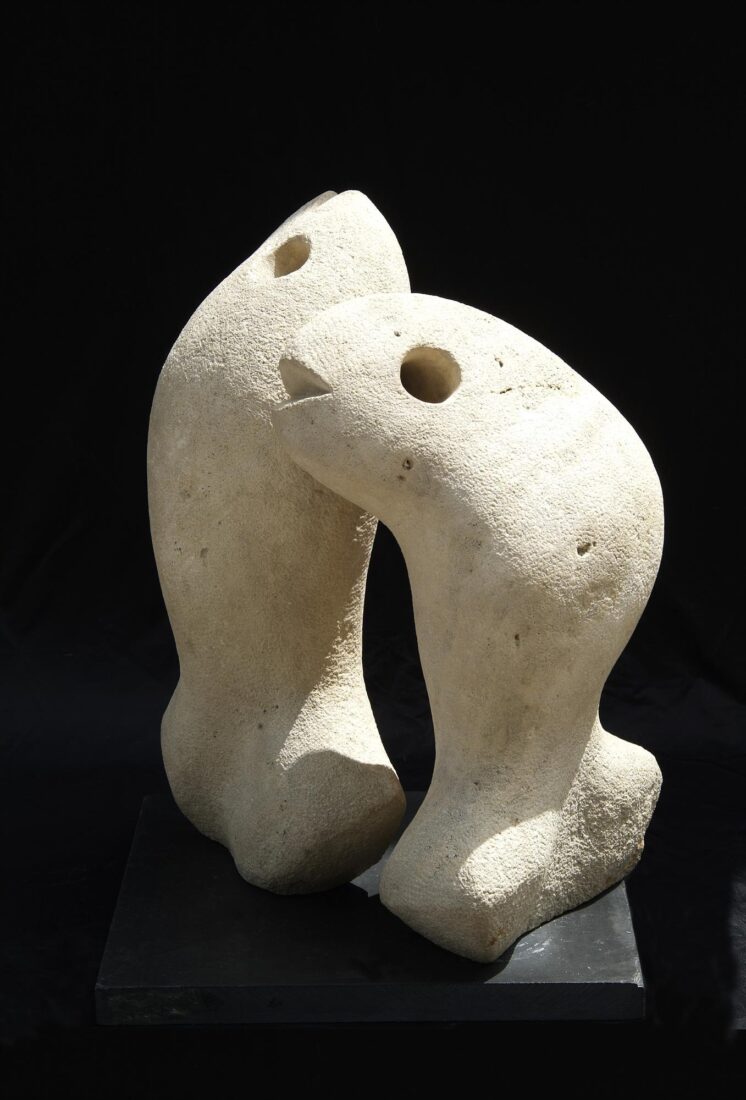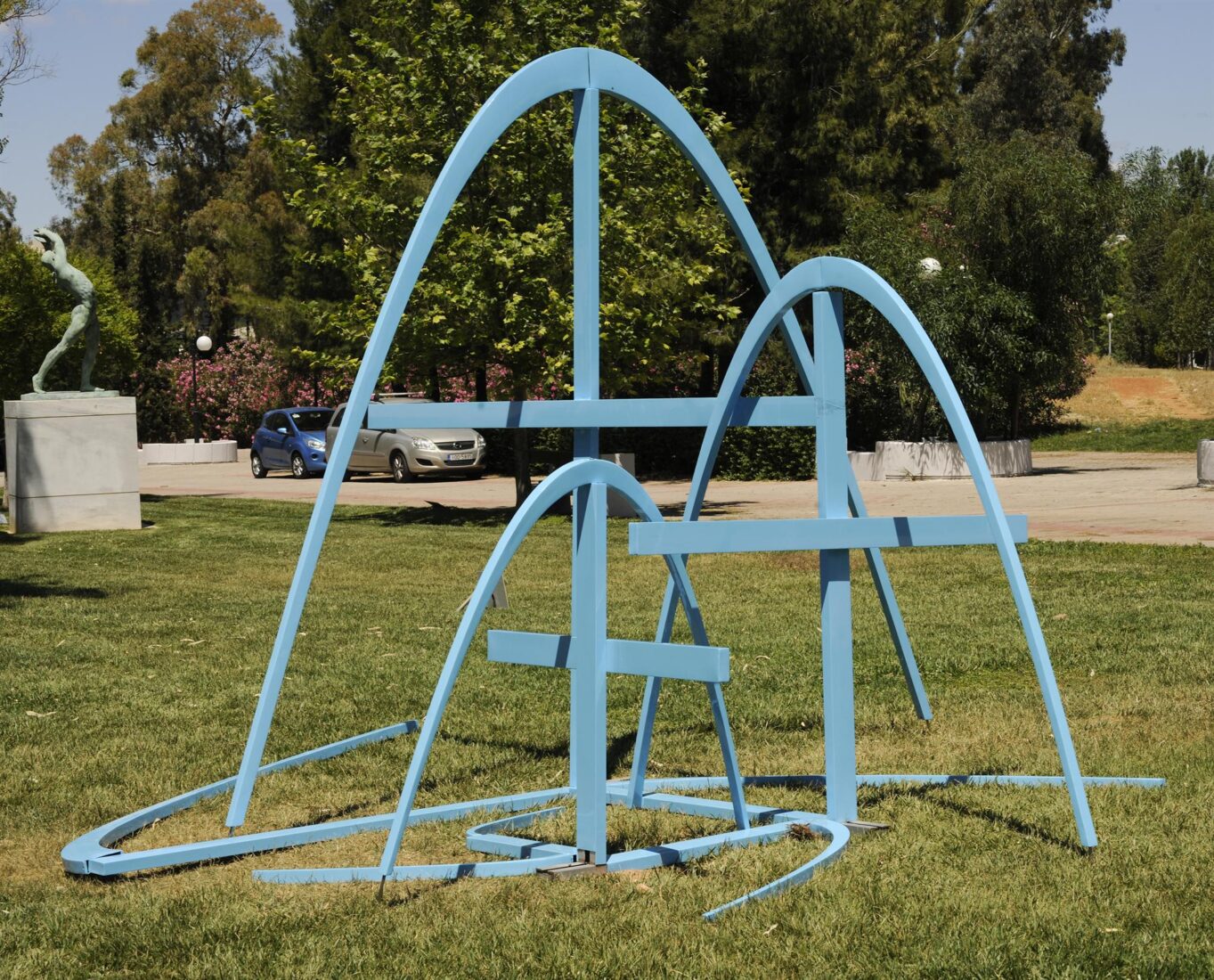A sculptor from Pergamos in Asia Minor, Vassos Kapantaes made the land of Ionia the center of his work. Using elements from the art of the archaic period, folk art, as well as modern tendencies, he creates works such as “Asia Minor Ma”, inspired especially by the history of Asia Minor.
Ma was an ancient goddess with a multiplicity of meanings, while in “Supplicants” by Aeschylus lent her name to Earth, the mother of everything. Here she is rendered as a fragmentary female figure, bearing a dramatic expression as if it were a mask from the ancient theater and an archaic hair-style that increases her dramaticness. Being depicted as static, without arms and with her legs cut-off, constitutes the personification of the artist’s own amputated paternal land.
The fragmentary, stylised and abstract human figure, with references to Constantin Brancusi’s style, or more frequently, Hans Arp, is at the centre of Kyriakos Kambadakis’s sculpture.
In 1976, he began his series of torsos, mainly in wood, of which “Torso III” is one; fluid, curvilinear forms that set the light gliding across the surface, reflecting the texture of the wood and striking an ethereal effect. Meanwhile, the stillness is dispelled by a latent movement, conveyed by the twisting of the torso, the tightening of the shoulders, or the tilt of the head, which betray inner passion, or emotion, stirred by the existential angst that the artist sought to express in the majority of his works.
Giorgos Zongolopoulos worked with figurative depiction centered on the human being for a considerable period of time before moving on to completely abstract compositions. The realistic portraits he did, by and large before 1940, were succeeded by full-bodied figures with a steadily growing intensification of the simplified and schematic forms, particularly apparent in the Fifties.
The “Dance of Zalongo” was made at the beginning of the Fifties and is a study for the large white stone monument which was erected in Zalongo in 1961, in remembrance of the heroic act of the women of Souli, who, while dancing, fell down a precipice in order to avoid to get captured by the Turks. The composition aimed at the elevation of the monument so it would be visible from a great distance as well as its harmonization with the wild and imposing landscape. Its outline formed a triangle which contains four women holding each other by the hand. Rendered with exceptional austerity, these women grow gradually smaller in size and become more and more schematic, till the final one is little more than a compact volume, completely abstract. This successive development of the figures, which were erected as if they were otherworldly visions, lends the work rhythm and grandeur, while at the same time they harmoniously combine the empty with the full, an element that would particularly occupy Zongolopoulos in his later work as well.
